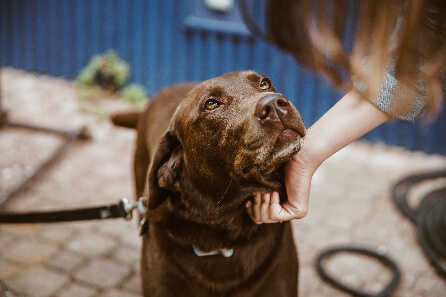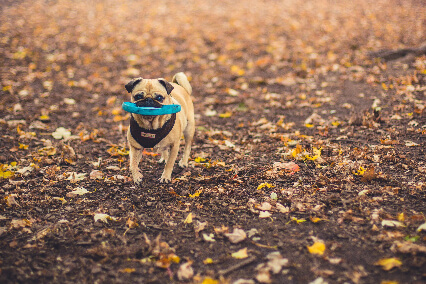Dog Training Techniques

Dogs are intuitive animals that generate their own habits according to the home that welcomes them. Dog training techniques help the dog to adapt at home. Let’s have a look at the different options to train your pet, with their pros and cons,
Dog training techniques
Positive training
This technique is based on rewarding the dog when they do something we like. By giving a reward for good behavior, the dog will want to repeat it. The most commonly used rewards are food and petting, but they also understand praise. For this reason, it’s about creating a code between human and animal.
For example, when playing, we often take it to the extreme. Both the animal and the human run for a ball in a park, but, when one gets tired, they stop, and that’s a sign the game should be stopped. Both people and animals understand the situation.
The downside, according to some trainers, is that this training isn’t enough. Especially in working dogs.

Different types of positive canine training
These are the different techniques that are applied at the moment of giving orders or preparing the animal for an emotion:
- With a clicker: They associate the sound of a clicker with the reward. Then the dog will relate the sound to the command, whether or not there’s a reward.
- Extinction: Avoid reinforcing undesired behaviors with petting. For example, when barking.
- Incompatible behavior: We encourage one type of behavior to prevent them from performing another.
- MAR (Mark and Reward): If the dog doesn’t obey, they aren’t rewarded and this is shown with a gesture that says there’ll be no reward.
- Counterconditioning: Try to change the feelings surrounding a stimulus. If they’re afraid of bicycles, give them a reward when they see one.
Traditional canine training
This type of training is purely based on punishment. It was used to train animals other than dogs. It’s almost out of use and is highly criticized by animal rights and care organizations.
It has been proven that the dog doesn’t understand punishment. And, by punishing them, the animal loses confidence, with the consequent deterioration of the bond. It results in nervous and stressed dogs whose behavior can become unpredictable and possibly have dire consequences.
New types of training
These are complementary types of training and can be applied along with the traditional ones:
- Training based on ethology or breed behavior: This is based on the observation of the dog’s natural behavior and is very popular. It respects their instincts and promotes above all the social group.
- Basic obedience training: The dog is conditioned to behave in a way adapted to life in society with humans. Positive training is used to teach basic commands.
- Training for special functions: This is training for working dogs, such as guide dogs or rescue dogs. Also included are guard dogs, protection dogs, sporting dogs, etc.

How to choose suitable dog training techniques
In order to choose a technique, you must take into account your dog’s character and your own teaching skills. Whether you find it easy or difficult will determine your choice. It’s advisable for the technique to be based on your dog’s character. Respecting their natural behavior and strengthening your bond is fundamental.
The activity of learning tricks together can be a great stimulus for your relationship. However, if you prefer, you can go to a dog trainer. There are different types of training courses that you can take with your best friend.
To train your pet on your own, keep in mind these preparation points:
- Reduce stress: Stressed dogs behave badly. Therefore, we advise you to lower their stress levels by stimulating the animal with caresses.
- Practice patience: Training a dog is a lifelong task. It takes time and effort to achieve results.
- Communicate with your dog: You must learn to understand your pet. They may not obey because they don’t understand you and not because they don’t want to.
- Understand your dog: Realize that they’re only a dog and they do “doggy” things! They don’t cause problems out of malice. Don’t get angry. If they misbehave, it’s usually because of our mistakes in daily care and lack of training.
Training isn’t to make an animal submit to you. It’s a good habit that improves coexistence and establishes rules and limits. Its benefits include increased security in the animal, specific routines and damage-free furniture (!)
Taking into account the animal’s character, and training it to fulfill its instincts and be satisfied, will make the difference between a friend and a neurotic dog.
All cited sources were thoroughly reviewed by our team to ensure their quality, reliability, currency, and validity. The bibliography of this article was considered reliable and of academic or scientific accuracy.
- O’Heare, J. & Hernández, A. I. (2016). Ciencia y técnica del adiestramiento canino.
- Burke, A. (15 de junio de 2019). How Much Exercise Does a Dog Need Every Day? American Kennel Club. Recuperado el 10 de marzo de 2022 de https://www.akc.org/expert-advice/health/how-much-exercise-does-dog-need/
- Gibson, B. (s.f.). Bull Terrier. Hispano Europea.
- Pérez Meléndez, M. (2018). Manual de adiestramiento canino Profesional. Un paso trascendente. Punto Rojo Libros S.L.
This text is provided for informational purposes only and does not replace consultation with a professional. If in doubt, consult your specialist.